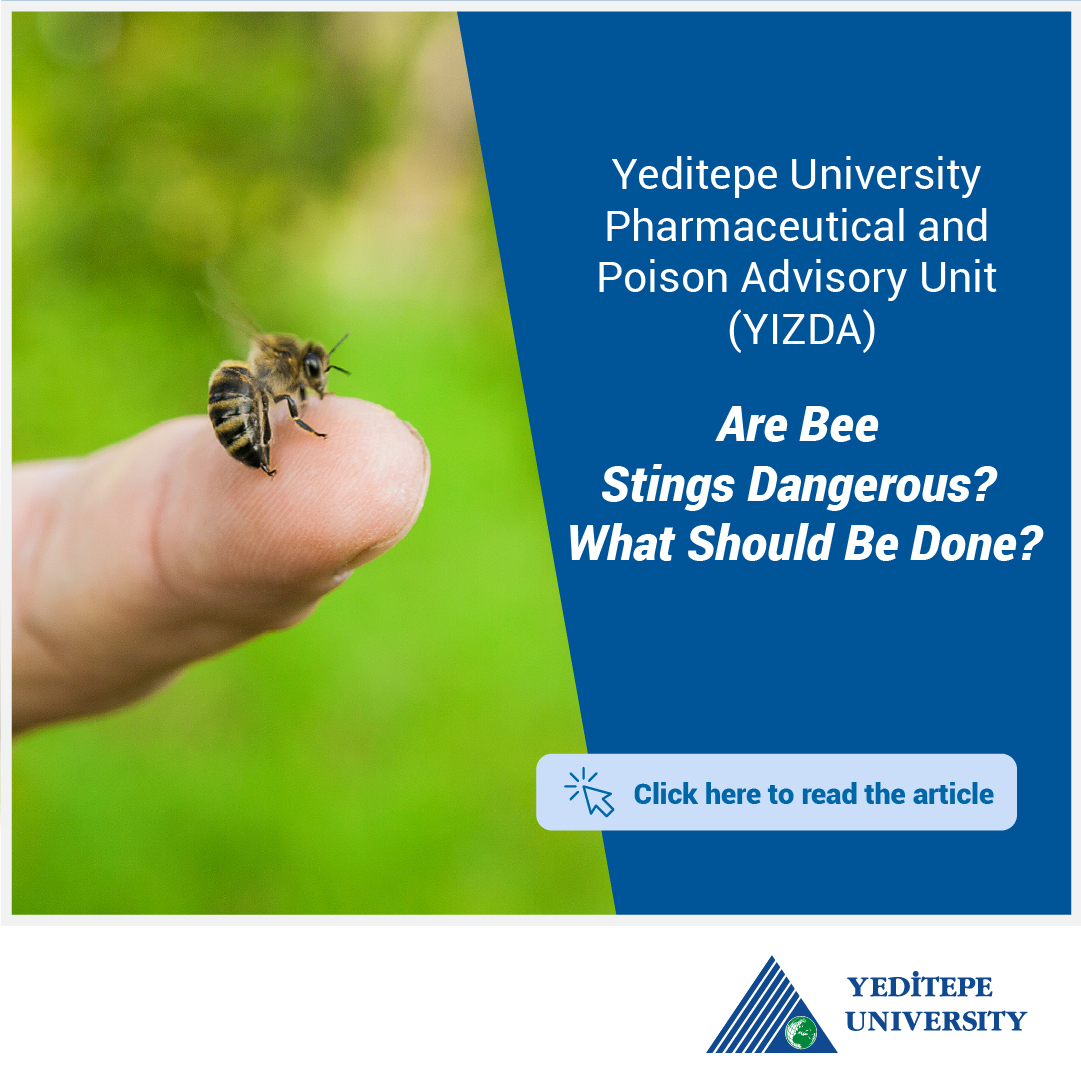Are Bee Stings Dangerous? What Should We Do?

If you've never been stung by a bee or other flying insect, it's hard to predict how your body will react. Stings from honeybees, wasps, and yellow jackets can be painful and cause the injection of venom under the skin, resulting in a painful and itchy bump. Some people experience mild reactions to insect bites or stings, while others are highly allergic and may develop anaphylaxis, which can be deadly. Therefore, it's important to be prepared in case of such incidents.
For someone allergic to insect venom, anaphylaxis may develop within minutes to several hours after the sting. During an anaphylactic reaction, the following symptoms may occur:
- Itching all over the body.
- Hives or swelling spreading from the sting site. Flushing (reddening of the skin).
- Runny nose, sneezing, or post-nasal drip (mucus in the throat).
- Itchy, watery eyes.
- Swelling of the lips, tongue, and/or throat.
- Shortness of breath, wheezing, and/or cough.
- Stomach cramps, nausea, vomiting, and/or diarrhea.
- Dizziness, increased heart rate, low blood pressure, or fainting.
- Any or all of these symptoms, including a metallic taste in the mouth, may occur
The best way to prevent an allergic reaction is to avoid being stung. When working outdoors, it is important to take precautions such as wearing trousers, long-sleeved shirts, and socks. Additionally, it is advisable to check food and beverages before consuming them if you are eating outdoors. Furthermore, you can determine your allergy status regarding bee stings through a skin test or blood test under the supervision of a doctor.
So, what should be done in case of a bee sting? Since the bee will leave behind a sting attached to the venom sac, it is important to try to remove it as quickly as possible. One way to do this is by gently scraping it with a blunt object, such as a credit card or a dull knife. It is advised to avoid using forceps or tweezers because they may trap the venom sac and inject additional venom into the skin, resulting in more severe pain.
To reduce pain and swelling, you can apply a cold compress, such as a cold, damp cloth or a cloth wrapped around an ice pack, to the affected area. It is advisable to consult with your pharmacist or doctor to obtain an antihistamine for itching and a pain reliever, such as ibuprofen, to alleviate discomfort.
References:
- https://www-uptodate-com/contents/bee-and-insect-stings-beyond-the-basics
- America's Poison Centers - seasonal poisoning hazards. Available https://poisoncenters.org/prevention/seasonal-poisoning-hazards
- Bilò MB. Anaphylaxis caused by Hymenoptera stings: from epidemiology to treatment. Allergy. 2011; 66 (Suppl. 95): 35-37.
- Rangan C. Emergency department evaluation and treatment for children with arthropod envenomations: immunologic and toxicologic considerations. Clin Ped Emerg Med. 2007;8:104-109.
- Rod Brouhard, E.-P. (2023) How to treat a bee sting, Verywell Health. Available at: https://www.verywellhealth.com/how-to-treat-a-bee-sting
- Health Resources & Services Administration https://poisonhelp.hrsa.gov/what-you- can-do/summer-tips
- Arı Sokması Alerjisi: Belirtileri ve Tedavi Yöntemleri Koç Üniversitesi Hastanesi. Available at: https://www.kuh.ku.edu.tr/alerji-ve-immunoloji/ari-sokmasi-alerjisi.
- Poisoning prevention in the Summer /Poison Control. Available at: https://www.poison.org/poison-prevention-tips-by-season/summer (Accessed: 23 May 2023).